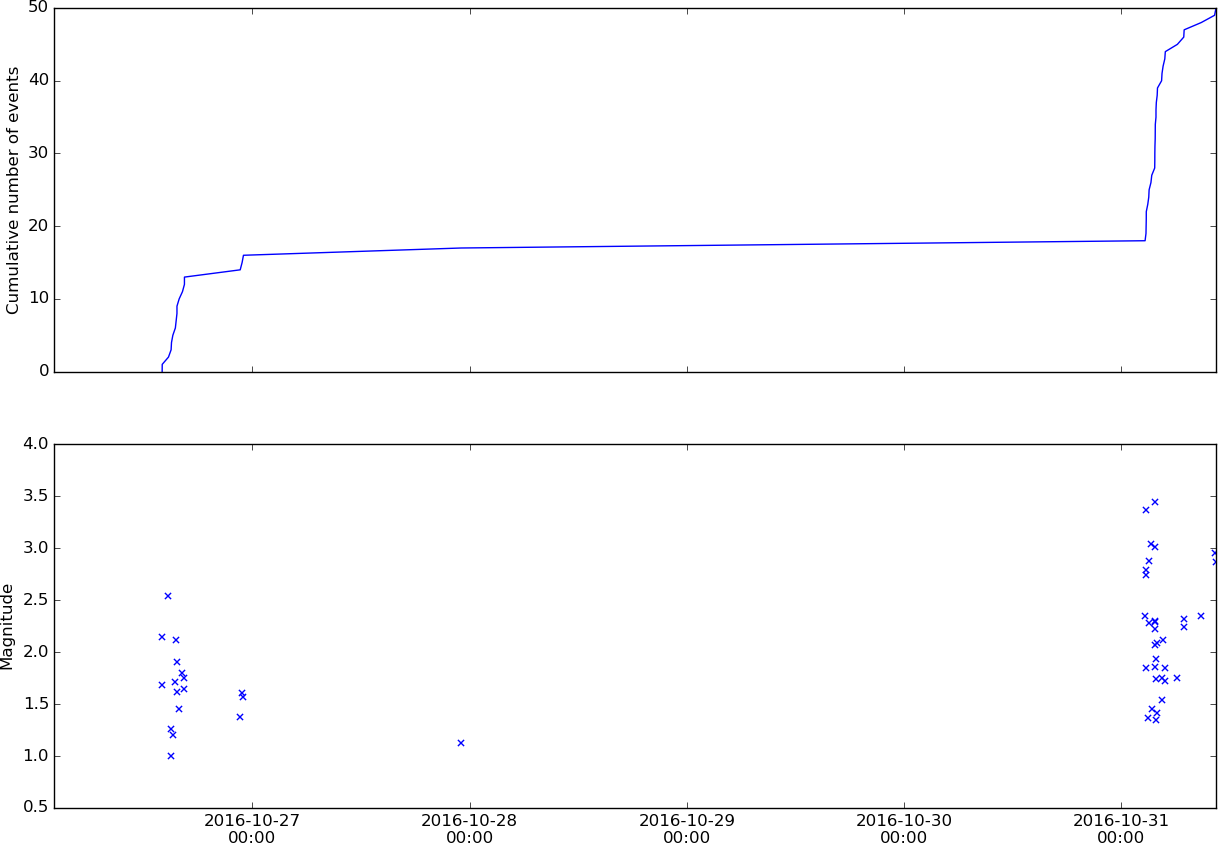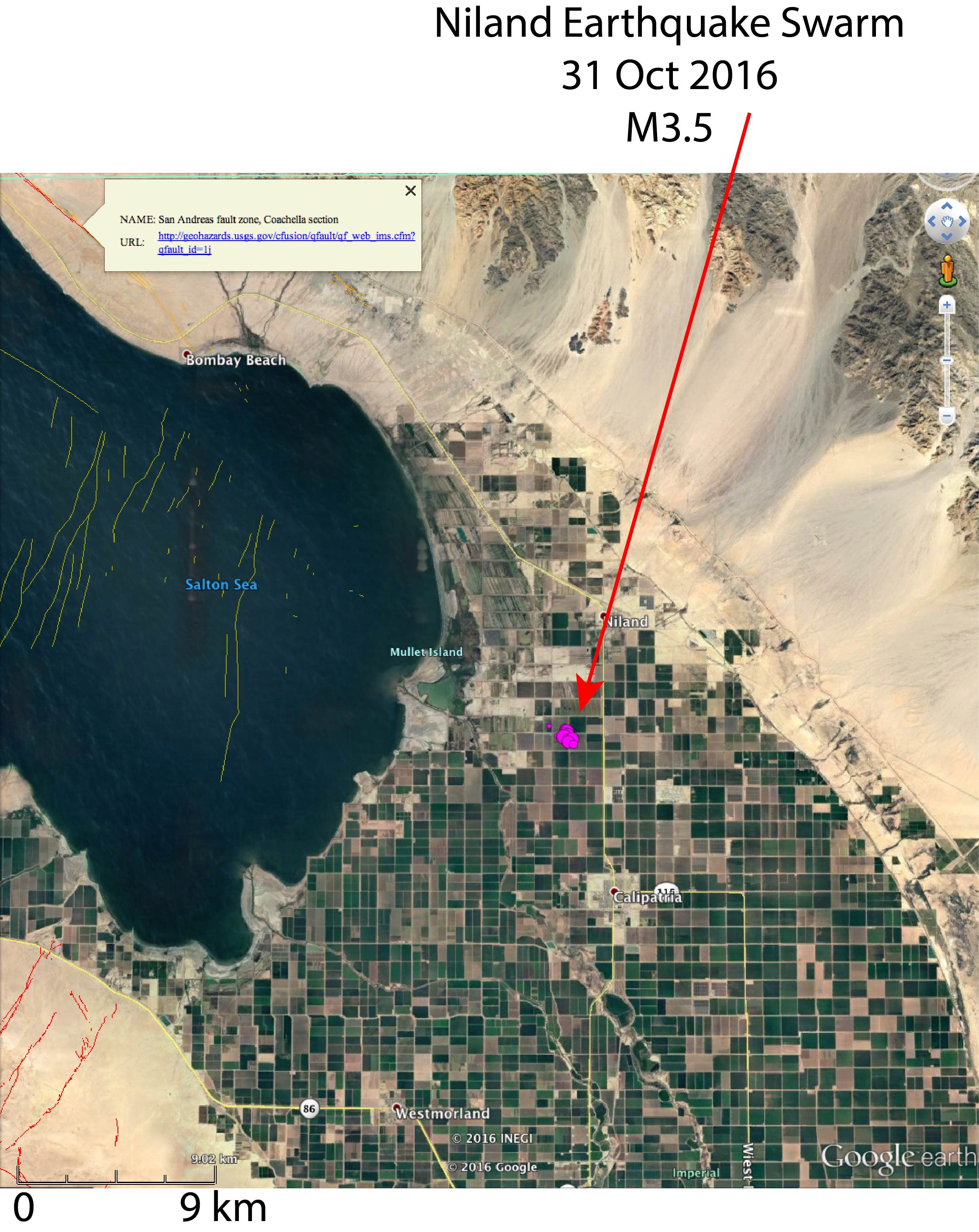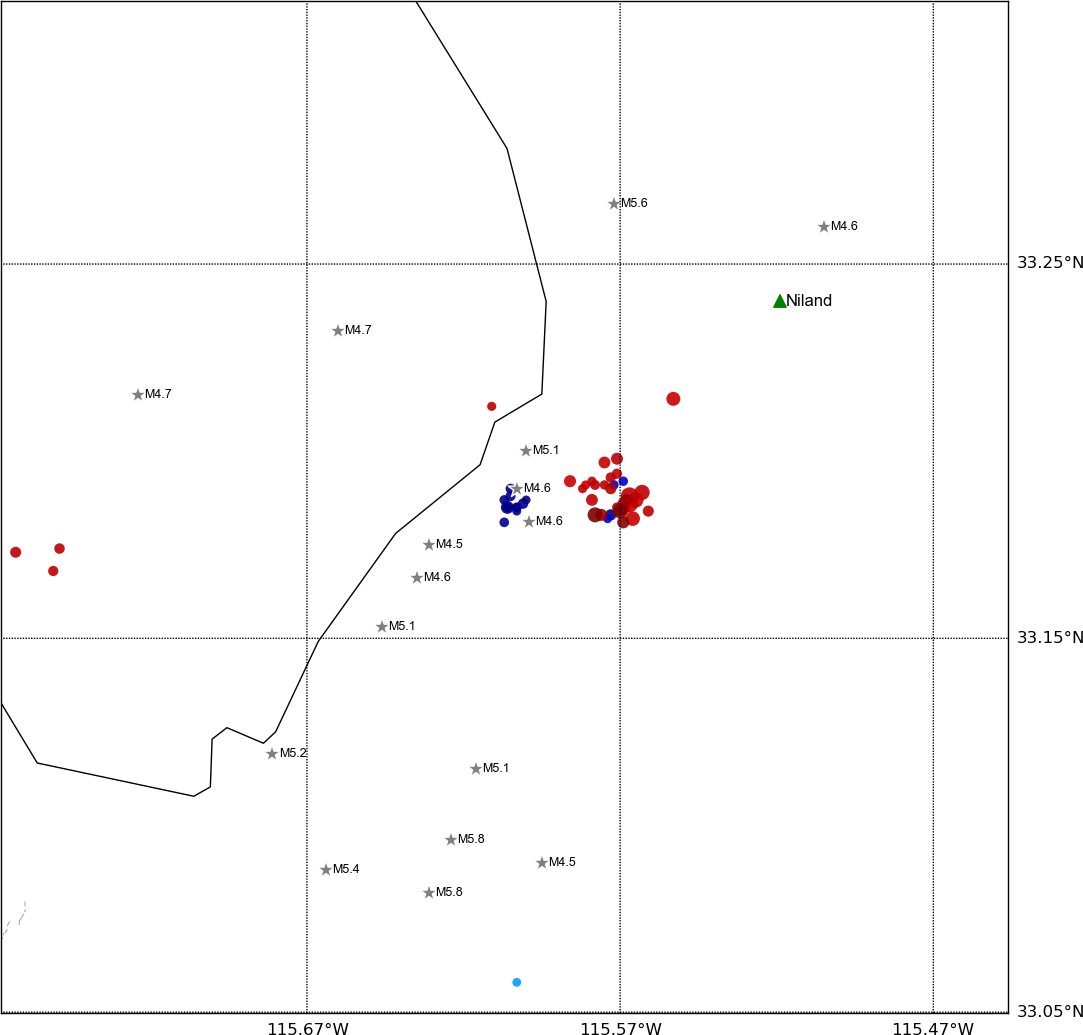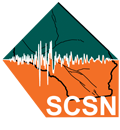Last updated October 4th, 2019
- 31 Oct 2016 03:41:07 PDT, (33.187, -115.567), depth 3.1km, 7km SW of Niland, California
- This event is the largest so far in a small cluster of events that started at about 2:30am PDT, consisting of about 35 recorded events. A few events were also recorded in the same area on 26 Oct 2016. A smaller cluster of events also occurred on the 26 Oct 2016 about 3km to the west of the most recent seismicity, giving a total of approximately 50 events over the last 6 days. We have recorded 4 events over M3 and more than 20 events over M2.
- The events are in the southern section of the Brawley Seismic Zone, a relatively active area for seismicity. Swarms occur relatively frequently, notably the swarms that occurred during the 1970’s and 1980’s in this area made the zone among the most active areas in all of California.
- Historical seismicity: since our records began in 1932 we’ve had 11 events of M4 or greater within 10km of today’s event, the largest was M5.1 (2005/09/02) and the most recent was M4.2 on 24 Dec 2014.
- The following information comes from our special report on the 2005 Obsidian Butte swarm
- The Brawley Seismic Zone is a north-striking zone of northwest and northeast-striking faults that extends from the southern end of the San Andreas fault to the northern end of the Imperial fault. It is often considered a remnant spreading center in the transition from the Gulf of California mid-ocean ridge to the San Andreas transform fault. Historically, activity includes both northeast-oriented cross-faults that typically involve left-lateral faulting, and activity on northerly to northwesterly-oriented strands (right-lateral faulting) of the zone. The largest events to have occurred on the cross-faults were the Elmore Ranch event in 1987, which is considered to have triggered the Superstition Hills event less than 12 hours later, and the Westmorland event in 1981. The Brawley Seismic Zone is proximal to the southern San Andreas fault, the San Jacinto fault zone, and the Imperial fault.
- The pattern of Brawley swarms of the 1970’s was a large number of very small earthquakes (sometimes exceeding 10,000 events) with up to a dozen moderate events of magnitude 4 or so, but no clear mainshock larger than the other events. The 1970’s swarms would be highly active for a few days and then taper off over the next week or two.
- Links for: USGS earthquake page, ShakeMap, DYFI.
- Visit our special reports page for further information on local notable earthquakes.









